Identification and Application of Preferred Seepage Channels in Turbidite Lobe Reservoirs of Formation A in Z Oilfield
Abstract
1. Introduction
2. Geological Background
3. Methods
4. Results
4.1. Classification Results of Preferred Seepage Channels for Single Well
4.2. Distribution of Preferred Seepage Channels
4.3. Typical Development Pattern of Preferred Seepage Channels
5. Discussion
5.1. Verification for the Predicted Results of Preferred Seepage Channels
5.2. Origin of Preferred Seepage Channels
5.2.1. Analysis of Sedimentary Characteristics in the Study Area
5.2.2. Analysis of Diagenetic Characteristics in the Study Area
5.2.3. Analysis of the Origin of Preferred Seepage Channels
5.3. Significance of Identifying Preferred Seepage Channels for Guiding Oilfield Development
6. Conclusions
- A neural network model is trained using logging parameters from commingled intervals and reservoir productivity types derived from meter oil production index. Applied to actual logging data, this model enables reservoir productivity type prediction at any point within individual wells. By integrating single-well productivity types as training targets with 3D property models built from logging curves, the model predicts reservoir productivity types across the entire reservoir, supporting effective reservoir evaluation.
- Horizontally, reservoir productivity types E and B are locally scattered, while types D, C, and A are widespread; preferred seepage channels are morphologically classified as zonal or sheet-like. Vertically, types C, D, and E dominate layers III and IV, whereas types A and B are more prevalent in layers I and II. The vertical combination patterns of preferred seepage channels include four types: homogeneous, bottom-dominated, top-dominated, and interbedded patterns.
- Preferred seepage channels form under the combined control of sedimentation and diagenesis, with two distinct types: Type S, where productivity correlates well with logging curves and is primarily sediment-controlled, and Type R, where productivity shows no clear logging correlation, strongly modified by post-depositional diagenesis. Type S is more common in the Z oilfield.
- For efficient development, a “layered and classified” strategy is proposed to optimize injection-production relationships: for zonal channels, relationships are established perpendicular to the channel direction to avoid rapid water breakthrough; for sheet-like channels, well spacing is increased to prevent the same issue.
Funding
Data Availability Statement
Acknowledgments
Conflicts of Interest
Abbreviations
| 3D | Three-dimensional |
References
- Jennette, D.; Wawrzyniec, T.; Fouad, K.; Dunlap, D.B.; Meneses-Rocha, J.; Grimaldo, F.; Muñoz, R.; Barrera, D.T.; Williams-Rojas, C.; Escamilla-Herrera, A. Traps and turbidite reservoir characteristics from a complex and evolving tectonic setting, Veracruz Basin, southeastern Mexico. AAPG Bull. 2003, 87, 1599–1622. [Google Scholar] [CrossRef]
- Huang, Y. Sedimentary characteristics of turbidite fan and its implication for hydrocarbon exploration in Lower Congo Basin. Pet. Res. 2018, 3, 189–196. [Google Scholar] [CrossRef]
- Olagundoye, O.; Akhajeme, E.; Yusuf, M.; Chizea, C.; Spina, V.; Joubert, T.; Parsa, A.; Fashanu, M.; Enuma, C.; Jaiyeola, J. Seismic net-to-gross estimation for a geologic model update: A case study from a turbidite lobe reservoir in the deepwater of the Niger Delta. Interpretation 2024, 12, 35–53. [Google Scholar] [CrossRef]
- Fernandes, F.J.D.; de Oliveiraneto, E.R.; Teixeira, L.; Freire, A.F.M.; Lupinacci, W.M. Cycle-consistent convolutional neural network for seismic impedance inversion: An application for high-resolution characterization of turbidites reservoirs. Geoenergy Sci. Eng. 2024, 235, 212709. [Google Scholar] [CrossRef]
- Huang, Y.; Tan, X.; Liu, E.; Wang, J.; Wang, J. Sedimentary processes of shallow-marine turbidite fans: An example from the Huangliu Formation in the Yinggehai Basin, South China Sea. Mar. Pet. Geol. 2021, 132, 105191. [Google Scholar] [CrossRef]
- Ziyu, L.; Wanli, J.; Jianping, L.; Wei, L.; Aijun, W. Sedimentary composition of turbidite fan and reservoir difference of main units: A case study of Meishan Formation in Qiongdongnan Basin. Chin. J. Geol. 2024, 59, 1268–1279. [Google Scholar]
- Santillán-Piña, N.; Arellano-Gil, J.; Gómez-Espinosa, C. Application of Ichnofossils and Microfossils in the Paleoenvironmental Reconstruction of Turbidite Sequences from the Chicontepec Basin, Central-Eastern Mexico; Springer: Cham, Switzerland, 2024; pp. 373–388. [Google Scholar]
- Alpak, F.O.; Xue, G. Effects of fine-scale turbidite lobe stratigraphic architecture on dynamic reservoir performance. Mar. Pet. Geol. 2022, 139, 105540. [Google Scholar] [CrossRef]
- Li, D.; Gong, C.; Fan, G.; Steel, R.J.; Ge, D.; Shao, D.; Ding, L. Morphological and architectural evolution of submarine channels: An example from the world’s largest submarine fan in the Bay of Bengal. Mar. Pet. Geol. 2023, 155, 106368. [Google Scholar] [CrossRef]
- Zhang, H.; Zhong, G.; Zhang, L.; Wang, B.; Lei, Z.; Guan, Y.; Yao, Y. The Guangya submarine fan in the South China Sea: A distinctive channelized slope-through fan. Geomorphology 2024, 452, 109116. [Google Scholar] [CrossRef]
- Macdonald, H.A.; Peakall, J.; Wignall, P.B.; Best, J. Sedimentation in deep-sea lobe-elements: Implications for the origin of thickening-upward sequences. J. Geol. Soc. Lond. 2011, 168, 319–332. [Google Scholar] [CrossRef]
- Mulder, T.; Etienne, S. Lobes in deep-sea turbidite systems: State of the art. Sediment. Geol. 2010, 229, 75–80. [Google Scholar] [CrossRef]
- Prélat, A.; Hodgson, D.M.; Flint, S.S. Evolution, architecture and hierarchy of distributary deep-water deposits: A high-resolution outcrop investigation from the Permian Karoo Basin, South Africa. Sedimentology 2009, 56, 2132–2154. [Google Scholar] [CrossRef]
- Dennielou, B.; Droz, L.; Babonneau, N.; Jacq, C.; Bonnel, C.; Picot, M.; Le Saout, M.; Saout, Y.; Bez, M.; Savoye, B.; et al. Morphology, structure, composition and build-up processes of the active channel-mouth lobe complex of the Congo deep-sea fan with inputs from remotely operated underwater vehicle (ROV) multibeam and video surveys. Deep Sea Res. Part II 2017, 142, 25–49. [Google Scholar] [CrossRef]
- Liu, Q.; Kneller, B.; Fallgatter, C.; Buso, V.V. Quantitative comparisons of depositional architectures of unconfined and confined turbidite sheet systems. Sediment. Geol. 2018, 376, 72–89. [Google Scholar] [CrossRef]
- Jamil, M.; Siddiqui, N.A.; Rahman, A.H.B.A.; Ibrahim, N.A.; Ismail, M.S.B.; Ahmed, N.; Usman, M.; Gul, Z.; Imran, Q.S. Facies heterogeneity and lobe facies multiscale analysis of deep-marine sand-shale complexity in the West Crocker Formation of Sabah Basin, NW Borneo. Appl. Sci. 2021, 11, 5513. [Google Scholar] [CrossRef]
- Mohdradzir, N.A.; Ali, C.A.; Mohamed, K.R. Sedimentological analysis of the turbidite sequence in the northern part of the west crocker formation, Northwest Sabah. Appl. Sci. 2022, 12, 12149. [Google Scholar] [CrossRef]
- Zhang, J.; Wu, S.; Fan, T.; Fan, H.; Jiang, L.; Chen, C.; Wu, Q.; Lin, P. Research on the architecture of submarine-fan lobes in the Niger Delta Basin, offshore West Africa. J. Palaeogeogr. 2016, 5, 185–204. [Google Scholar] [CrossRef]
- Doughty-Jones, G.; Mayall, M.; Lonergan, L. Stratigraphy, facies, and evolution of deep-water lobe complexes within a salt-controlled intraslope minibasin. AAPG Bull. 2017, 101, 1879–1904. [Google Scholar] [CrossRef]
- Liu, Q.; Kneller, B.; Fallgatter, C.; Buso, V.V. Depositional processes and impact on reservoir quality in deepwater Paleogene reservoirs, US Gulf of Mexico. AAPG Bull. 2015, 99, 1635–1648. [Google Scholar] [CrossRef]
- Umar, M.; Friis, H.; Khan, A.S.; Kassi, A.M.; Kasi, A.K. The effects of diagenesis on the reservoir characters in sandstones of the Late Cretaceous Pab Formation, Kirthar Fold Belt, southern Pakistan. J. Asian Earth Sci. 2011, 40, 622–635. [Google Scholar] [CrossRef]
- Dons, T.; Jørgensen, O.; Gommesen, L. Observations and quantitative analyses of waterflood patterns in a chalk reservoir using seismic data, Halfdan Field, Danish North Sea. In Proceedings of the SPE Offshore Europe Oil and Gas Conference and Exhi-bition, Aberdeen, UK, 4–7 September 2007. SPE-108531-MS. [Google Scholar]
- Wen-Min, Z.; Zhi-Yong, C.; Yan, Z.; Dan, W.; De-Li, Z. Research on Identification and Control of Dominant Seepage Channels in Medium and Low Permeability Reservoirs; Springer: Cham, Switzerland, 2023; pp. 588–598. [Google Scholar]
- Liu, H.; Shi, K.; Liu, B.; Song, X.; Guo, R.; Li, Y.; Wang, G.; Wang, H.; Shen, Y. Characterization and identification of bioturbation-associated high permeability zones in carbonate reservoirs of Upper Cretaceous Khasib Formation, AD oilfield, central Mesopotamian Basin, Iraq. Mar. Pet. Geol. 2019, 110, 747–767. [Google Scholar] [CrossRef]
- Cross, N.E.; Burchette, T.P. Middle Eastern carbonate reservoirs–the critical impact of discrete zones of elevated permeability on reservoir performance. Geol. Soc. Spec. Publ. 2025, 548, 65–113. [Google Scholar] [CrossRef]
- Chen, C.; Song, X.; Li, J. Dominant flow channels of point-bar reservoirs and their control on the distribution of remaining oils. Acta Pet. Sin. 2012, 33, 257–263. [Google Scholar]
- Yi, X.; Zhang, M.; Mu, G. Microscopic Distribution and Development Strategy of Residual Oil in Tight Sandstone. Processes 2023, 11, 1907. [Google Scholar] [CrossRef]
- Shunming, L.I.; Hongwen, D.; Xiuli, W.U.; Haina, Z. Sedimentary characteristics and evolution of Lower Devonian in Zarzaitine oilfield, eastern Algeria. Pet. Explor. Dev. 2006, 33, 383–387. [Google Scholar]
- Chen, L. Study on Petrological Characteristics of F4 Reservoir in Zarzaitine Oilfield. Inn. Mong. Petrochem. Ind. 2009, 11, 133–136. [Google Scholar]
- Li, C.; Li, W.; Ye, H.; Zhu, Q.; Shan, X.; Wang, S.; Wang, D.; Zhang, Z.; Wang, H.; Zhou, X. Reservoir Architecture of Turbidite Lobes and Remaining Oil Distribution: A Study on the B Formation for Z Oilfield of the Illizi Basin, Algeria. Processes 2025, 13, 805. [Google Scholar] [CrossRef]
- Sun, G. Enhanced Oil Recovery Technology Research and Application of F4 Reservoir in Zarzaitine Oilfield in Algeria; China University of Geoscience (Beijing): Beijing, China, 2013; pp. 1–44. [Google Scholar]
- Galeazzi, S.; Point, O.; Haddadi, N.; Mather, J.; Druesne, D. Regional geology and petroleum systems of the Illizi–Berkine area of the Algerian Saharan Platform: An overview. Mar. Pet. Geol. 2010, 27, 143–178. [Google Scholar] [CrossRef]
- Zheng, W.; Wu, X.; Deng, H. Stratigraphy and Facies Distribution of Lower Devonian F4 Unit in Zarzaitine Oilfield, Illizi Basin, Algeria. Earth Sci./Diqiu Kexue 2012, 37, 181–189. [Google Scholar]
- Zhang, Z.M.; Li, Y.F.; Zheng, N.X.; Cao, Z.; Lu, X.Y.; Li, Z.F.; Sun, R.M.; Xia, C.S.; Li, L.; Niu, B.; et al. Early Paleozoic lithofacies palaeogeography evolution characteristics of Ghadames Basin in North Africa. J. Palaeogeogr. 2024, 26, 45–57. [Google Scholar]
- Li, L. Study on Heterogeneity of F4 Reservoir in Zarzaitine Oilfield. China Acad. J. Electron. Publ. House 2012, 10, 114. [Google Scholar]
- Zhang, Q.; Li, Y.; Li, B.; Liu, Z.; Wei, J.; Zhou, J. Identification methods and development strategy study of thief zone in reef-bank carbonate reservoirs:A case study of the Mishrif reservoir in Rumaila oilfield. Pet. Geol. Recovery Effic. 2016, 23, 29–34. [Google Scholar]
- Wang, J.; Fan, Z.; Zhao, L.; Chen, Y.; Zhang, A.; Zhang, X.; Guo, X.; Li, Y. A new method for identification of flow units of sandstone reservoir based on reservoir performance and its application in the Akshabulak oilfield, Kazakhstan. Earth Sci. Front. 2023, 30, 88–99. [Google Scholar]
- Fahad, A.A.; Ali, M.A.; Mustafa, M.S. Evaluation of super-k wells performance using fluid flow index in Ghawar field. In Proceedings of the SPE Middle East Oil Show, Manama, Bahrain, 17–20 March 2001. SPE-68162-MS. [Google Scholar]
- Li, B.; Najeh, H.; Lantz, J.; Rampurawala, M.A.; Gok, I.; Al-Khabbaz, M. Detecting thief zones in carbonate reservoirs by integrating borehole images with dynamic measurements: Case study from the Mauddud reservoir, North Kuwait. Soc. Pet. Eng. Reserv. Eval. Eng. 2010, 13, 193–202. [Google Scholar] [CrossRef]
- Feng, Q.; Wang, S.; Wang, S.; Wang, Y.; Chen, D. Identification of thief zones by dimensionless pressure index in waterfloods. In Proceedings of the SPE Enhanced Oil Recovery Conference, Kuala Lumpur, Malaysia, 16 July 2011. SPE-143926-MS. [Google Scholar]
- Wu, X.L.; Zheng, W.B.; Deng, H.W. Stratigraphy and Distribution of Gravity Flow Deposition, Lower Devonian F4 Unit, Zarzaitine Oilfield, Illizi Basin, Algeria. Pet. Sci. Technol. 2012, 30, 1151–1162. [Google Scholar] [CrossRef]
- Chen, G.; Meng, Y.; Huan, J.; Wang, Y.; Zhang, L.; Xiao, L. Distribution and origin of anomalously high permeability zones in Weizhou formation, Weizhou 12-X oilfield, Weixinan Sag, China. Earth Sci. Inf. 2021, 14, 2003–2015. [Google Scholar] [CrossRef]

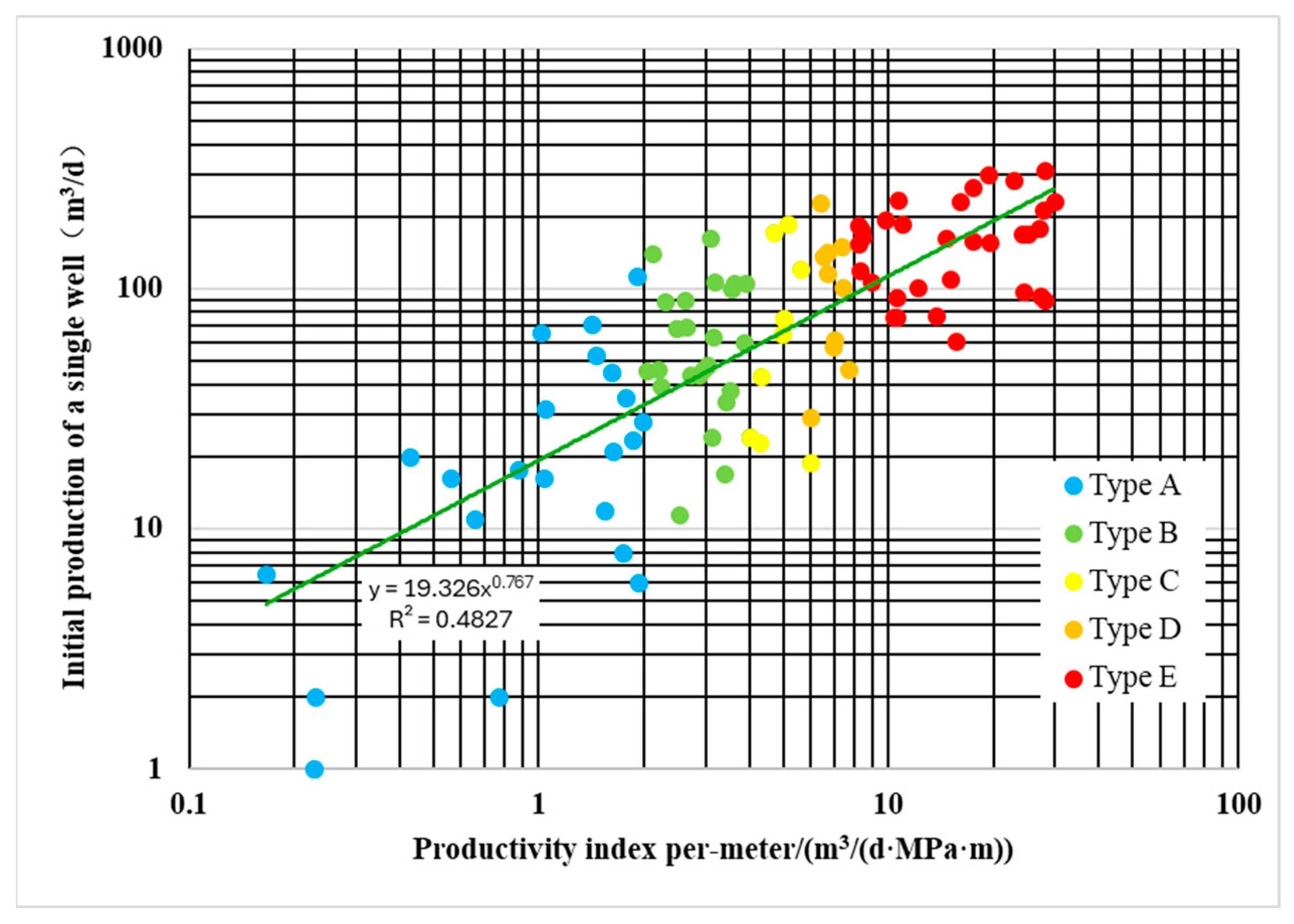
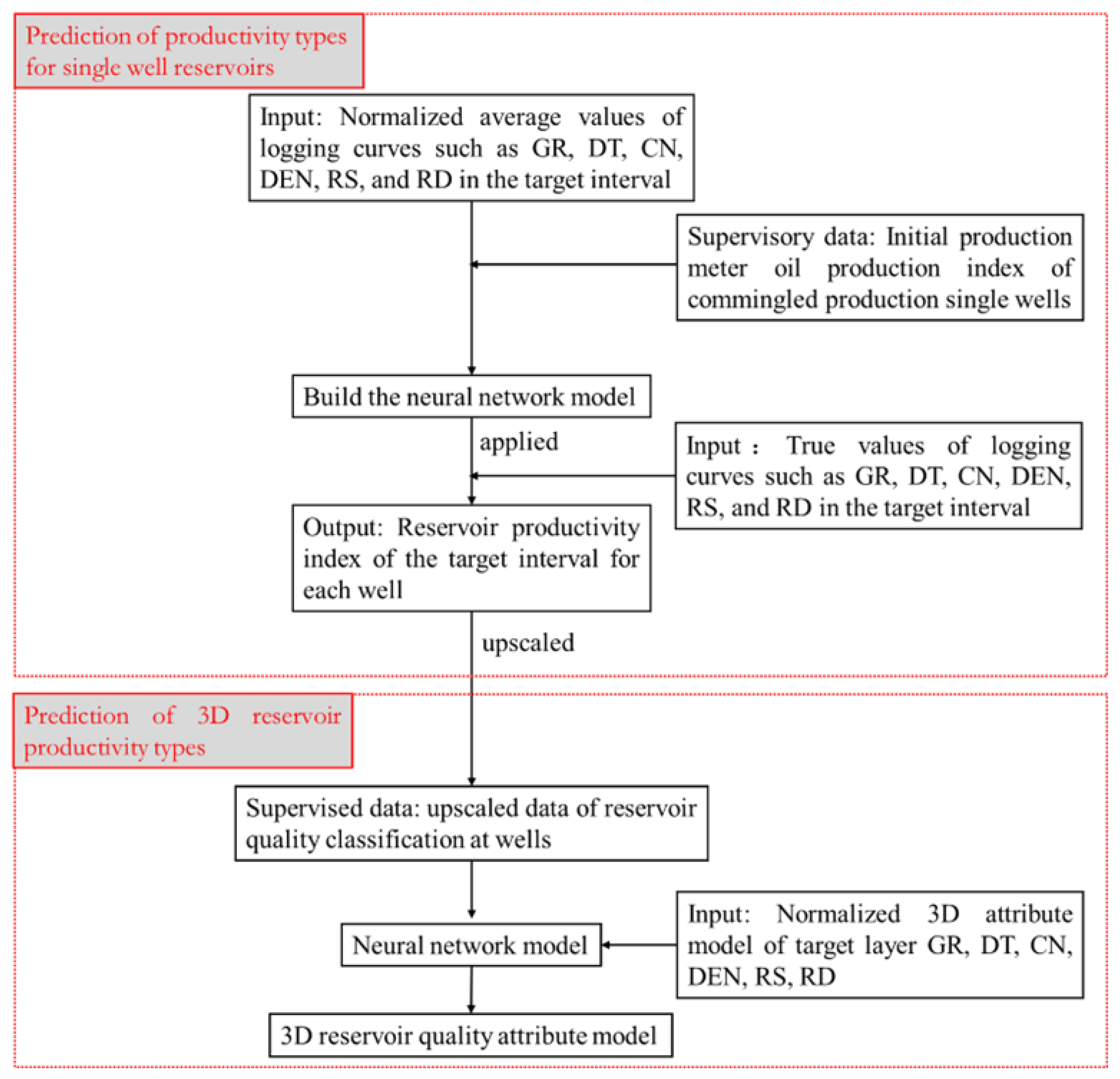
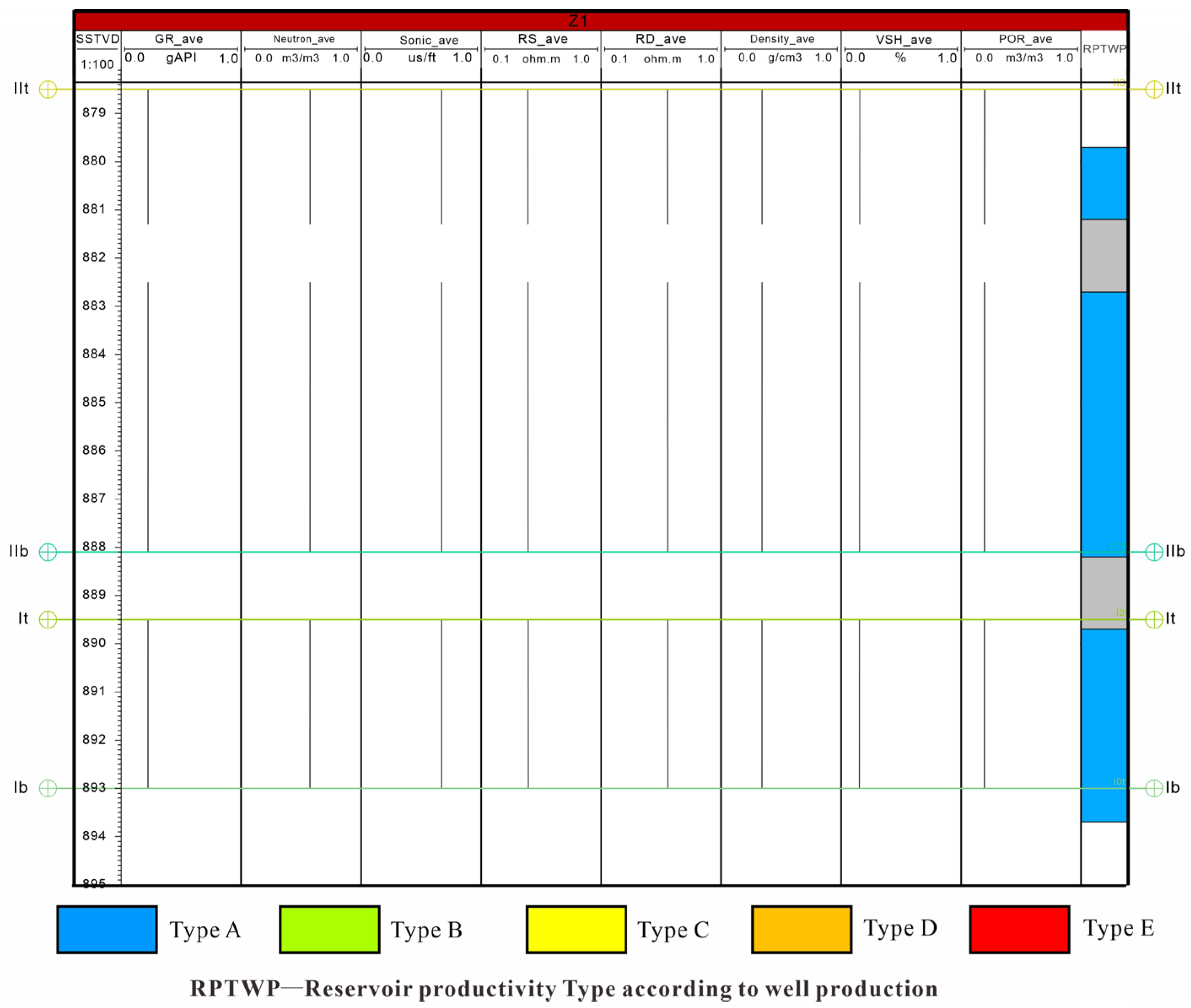
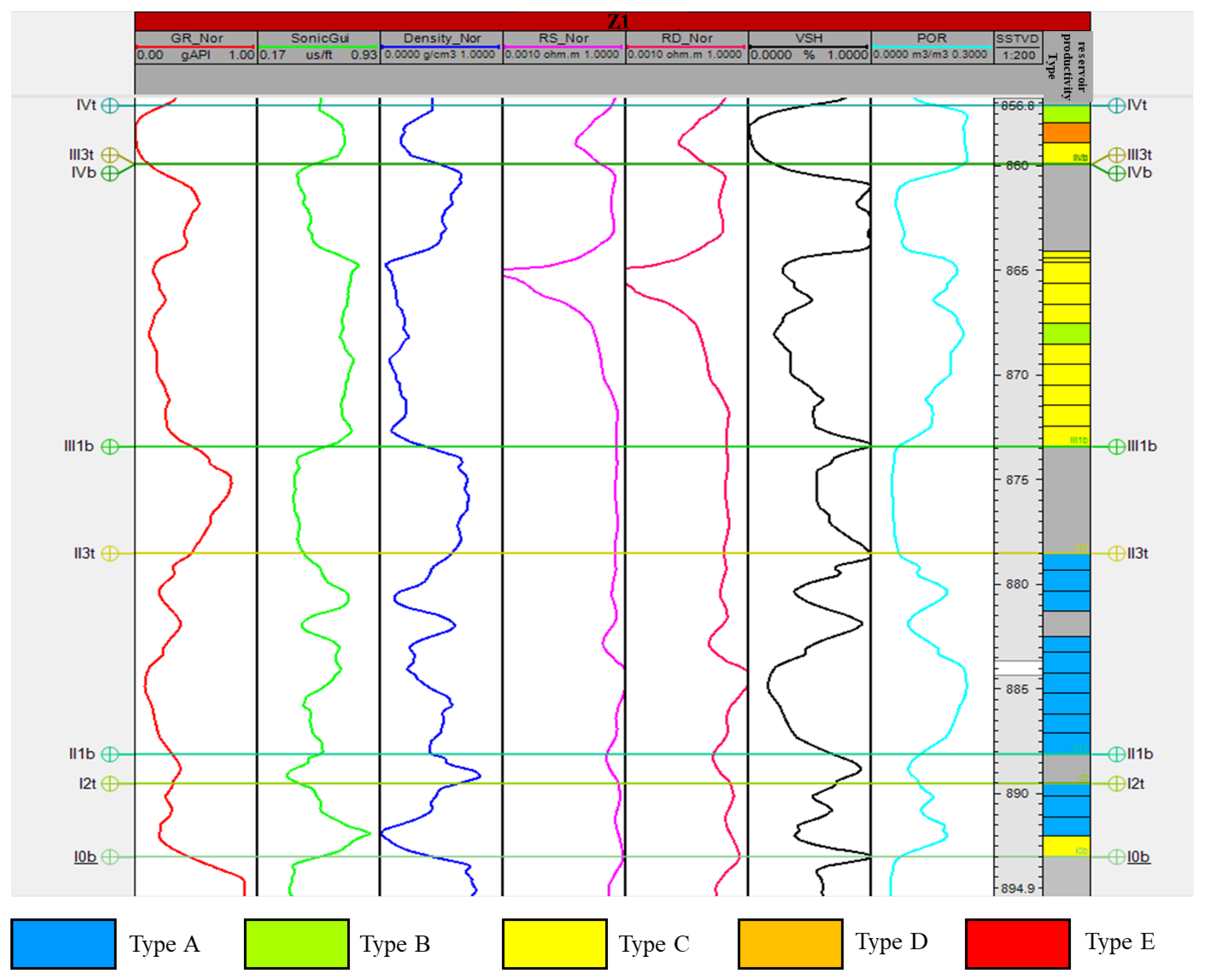
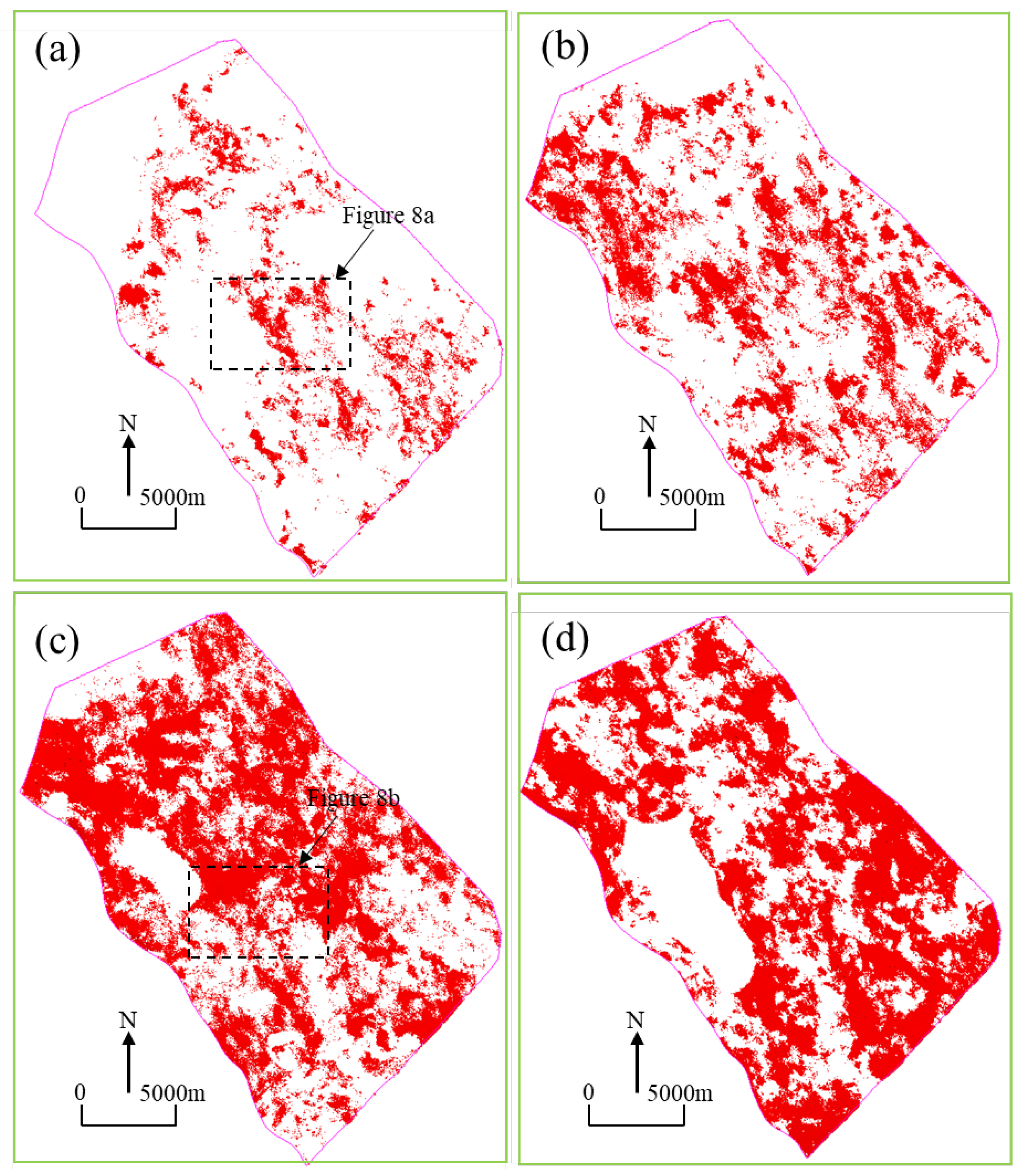


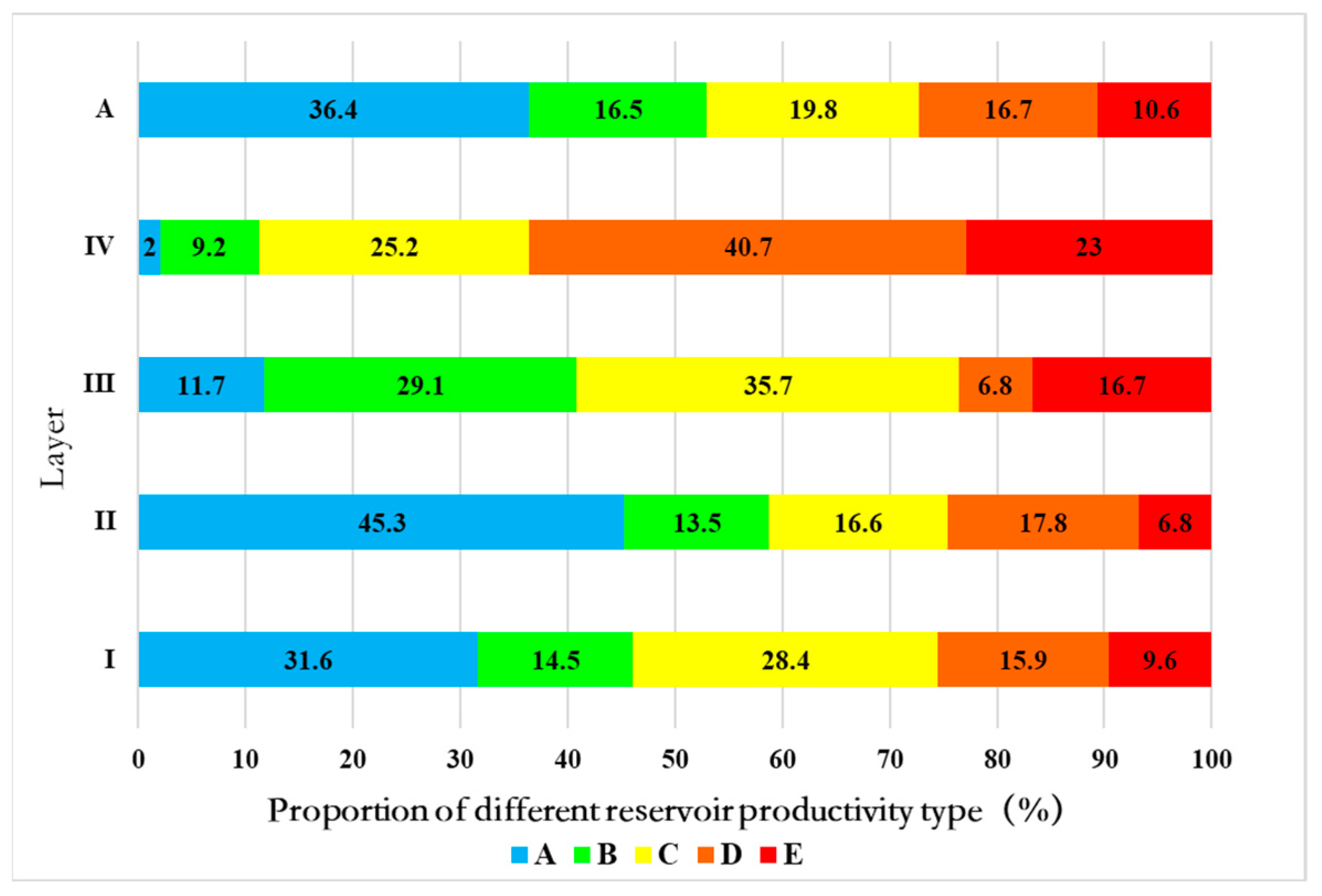
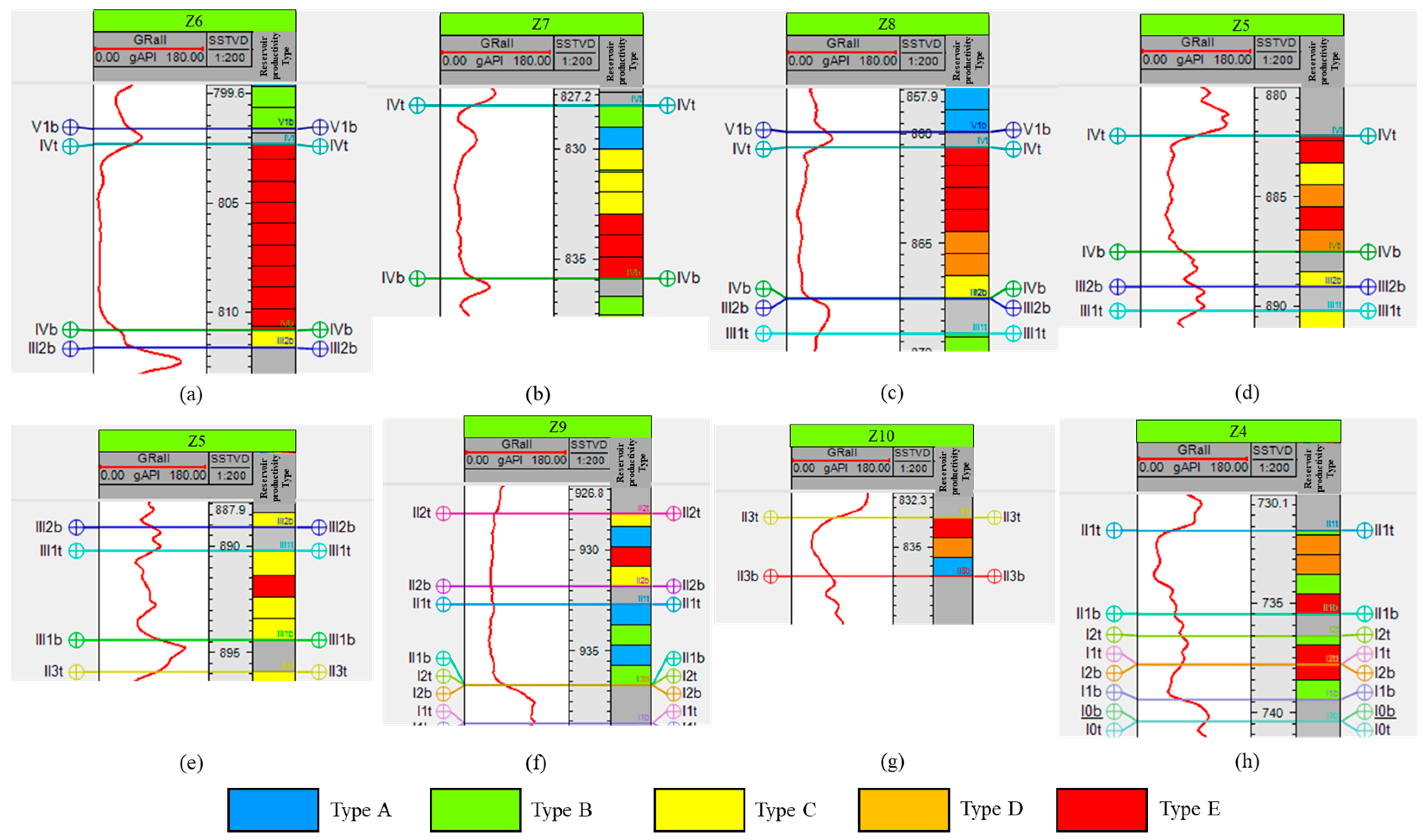
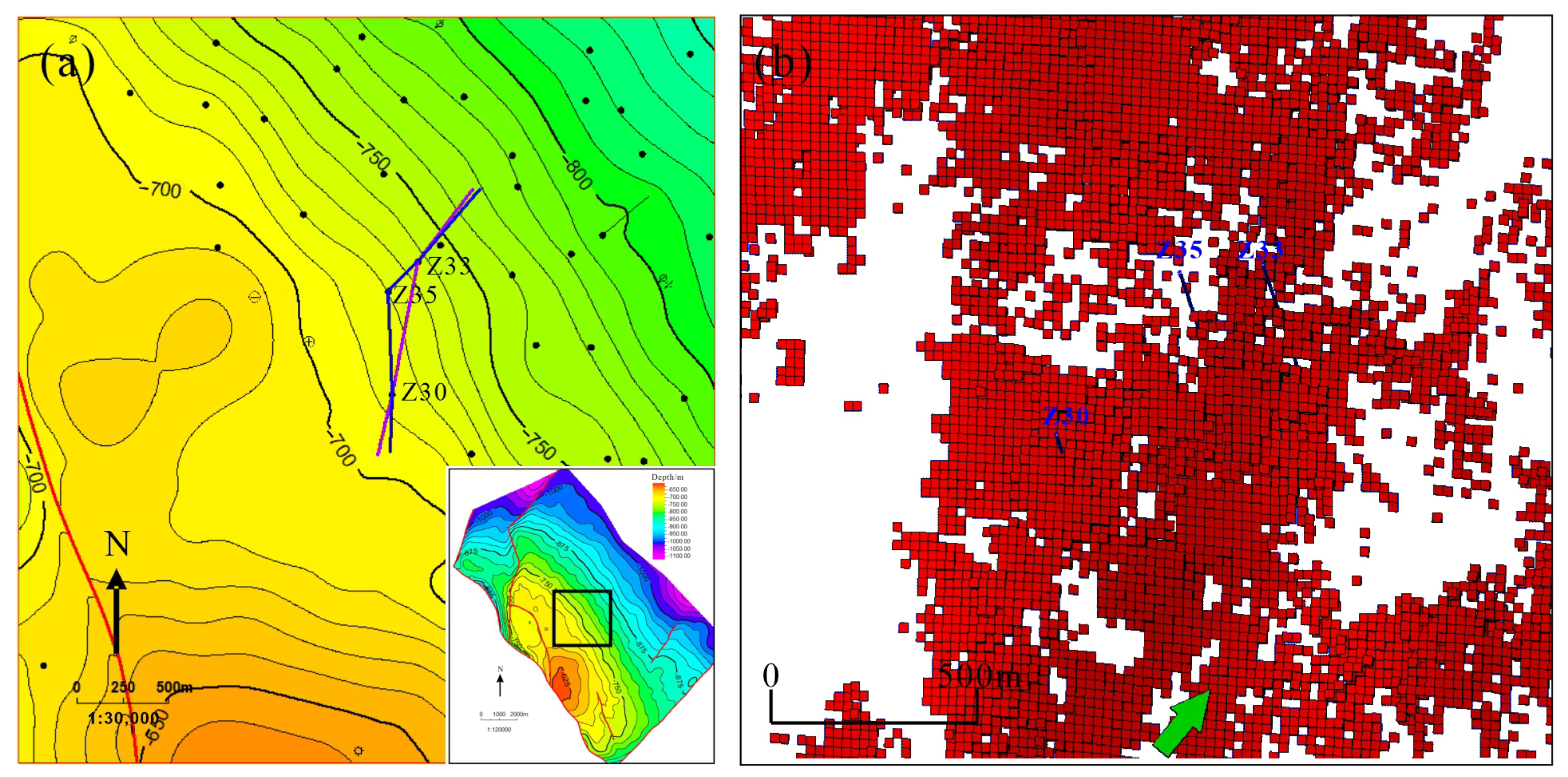
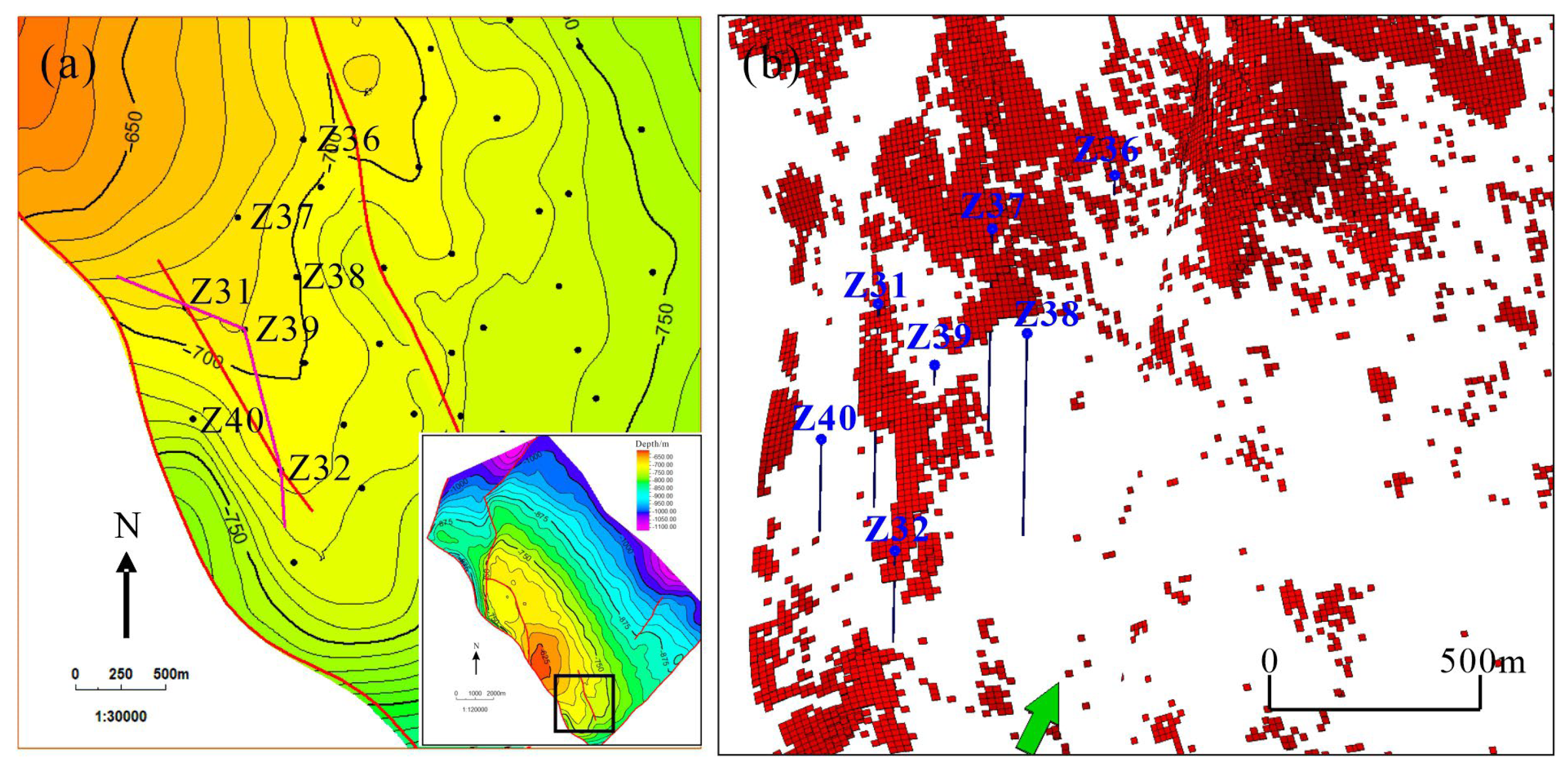
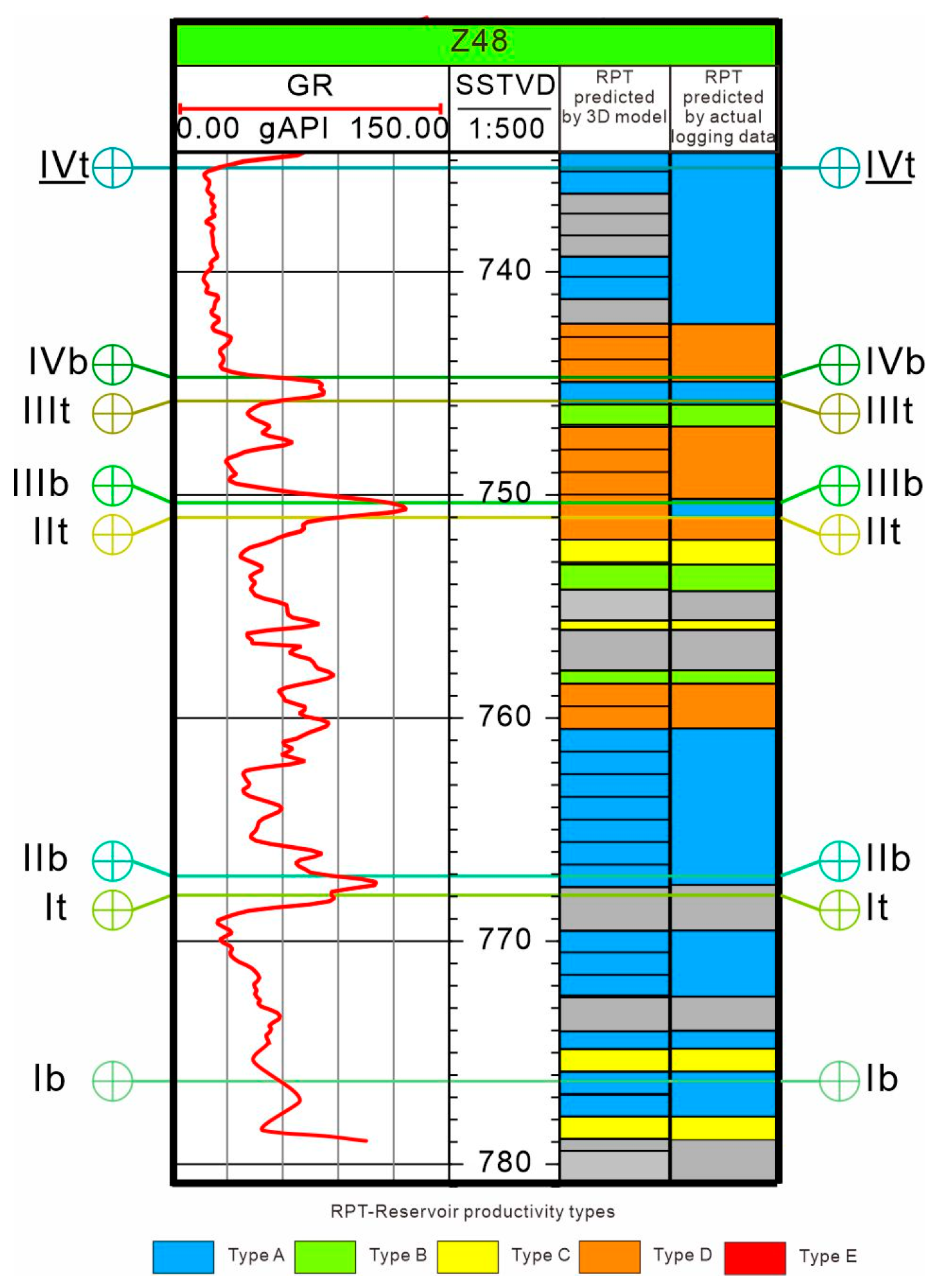
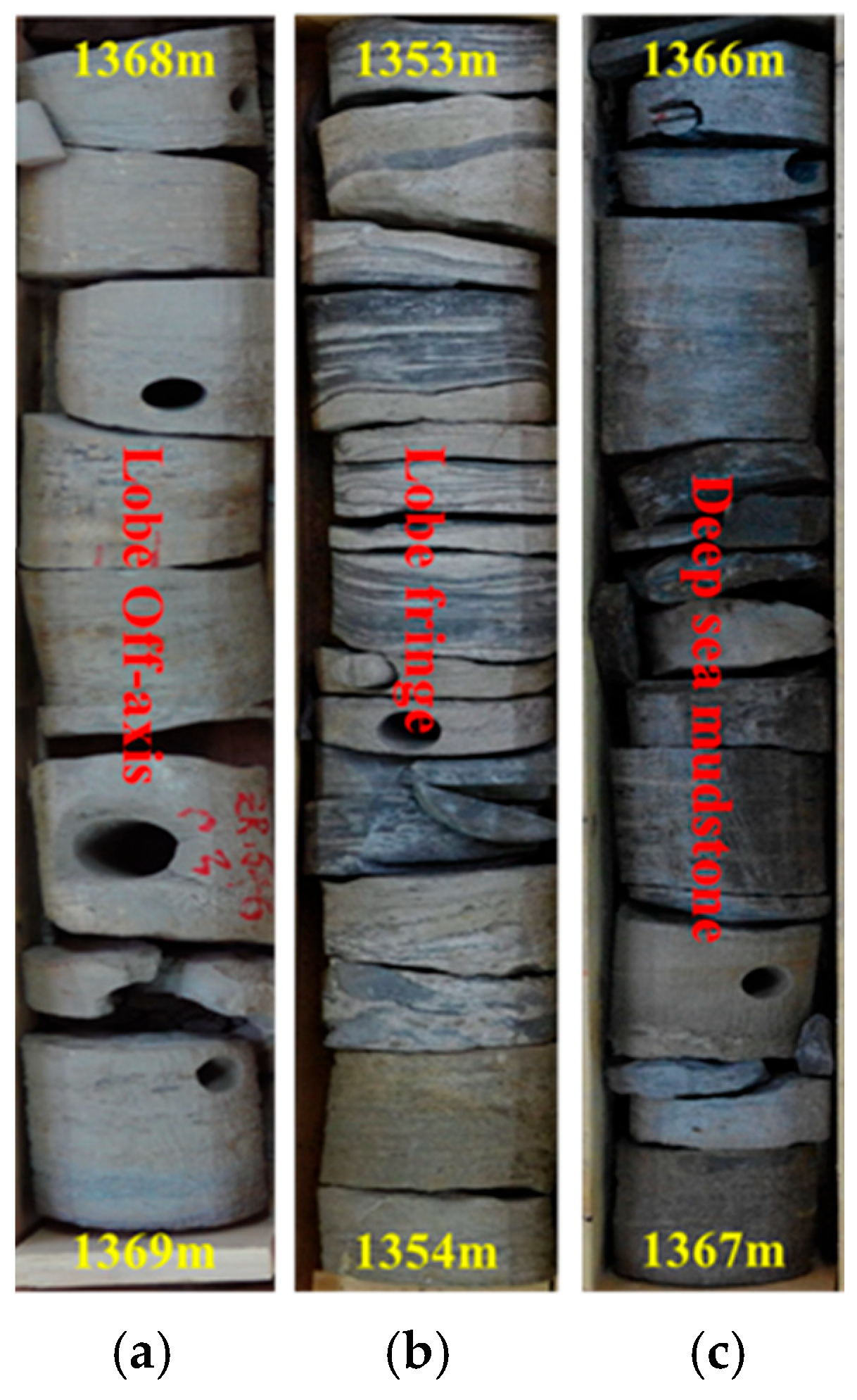
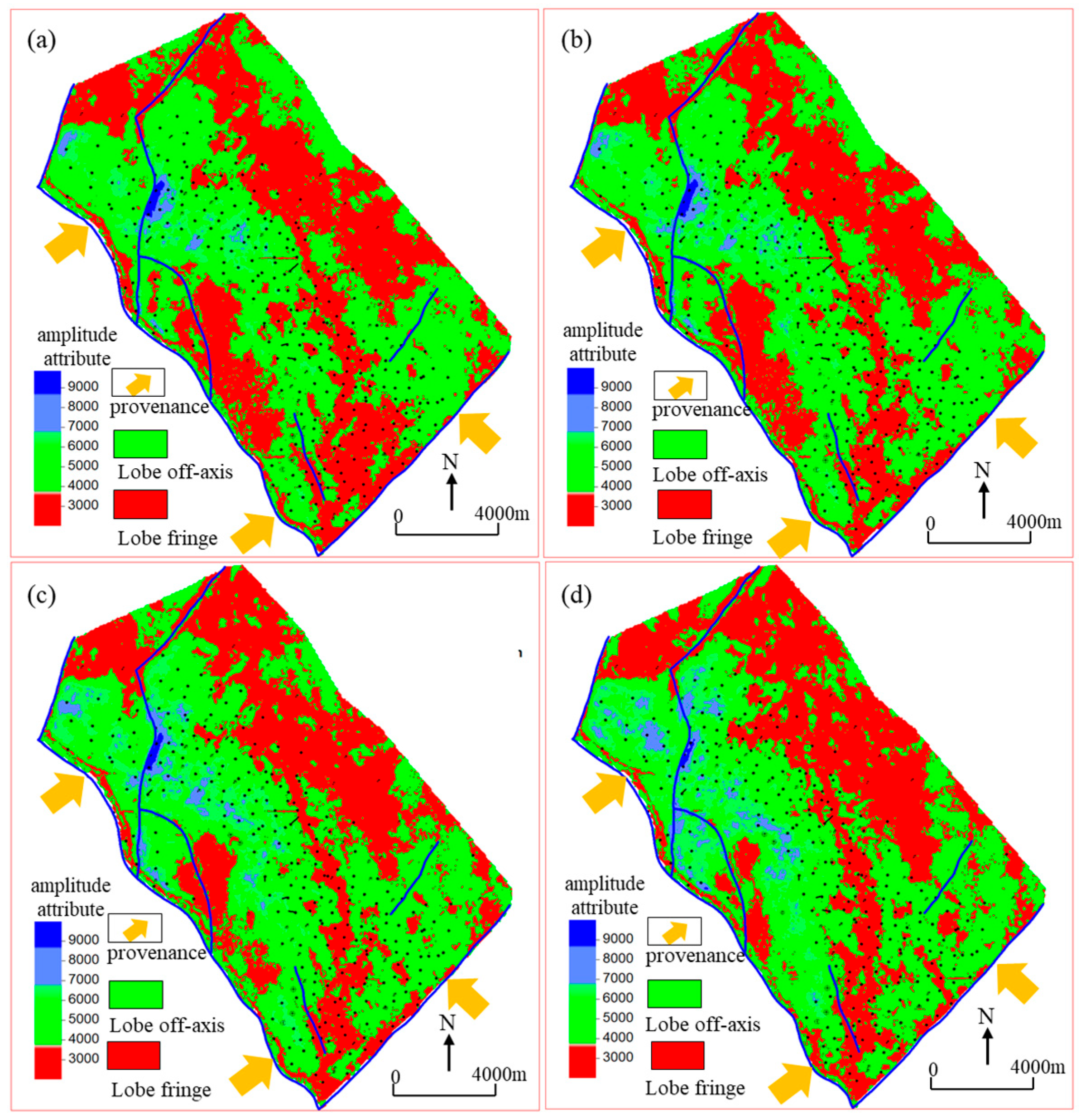
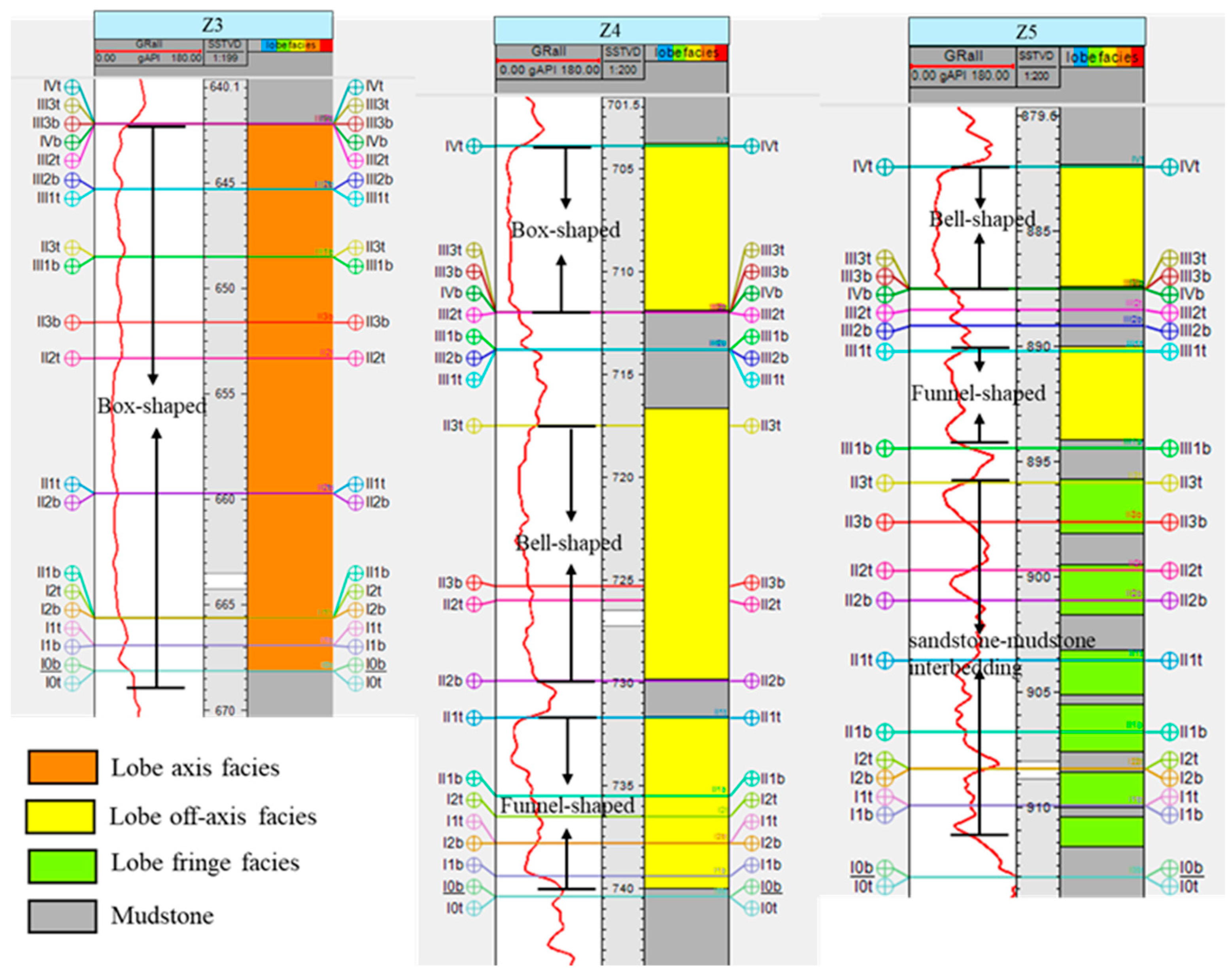

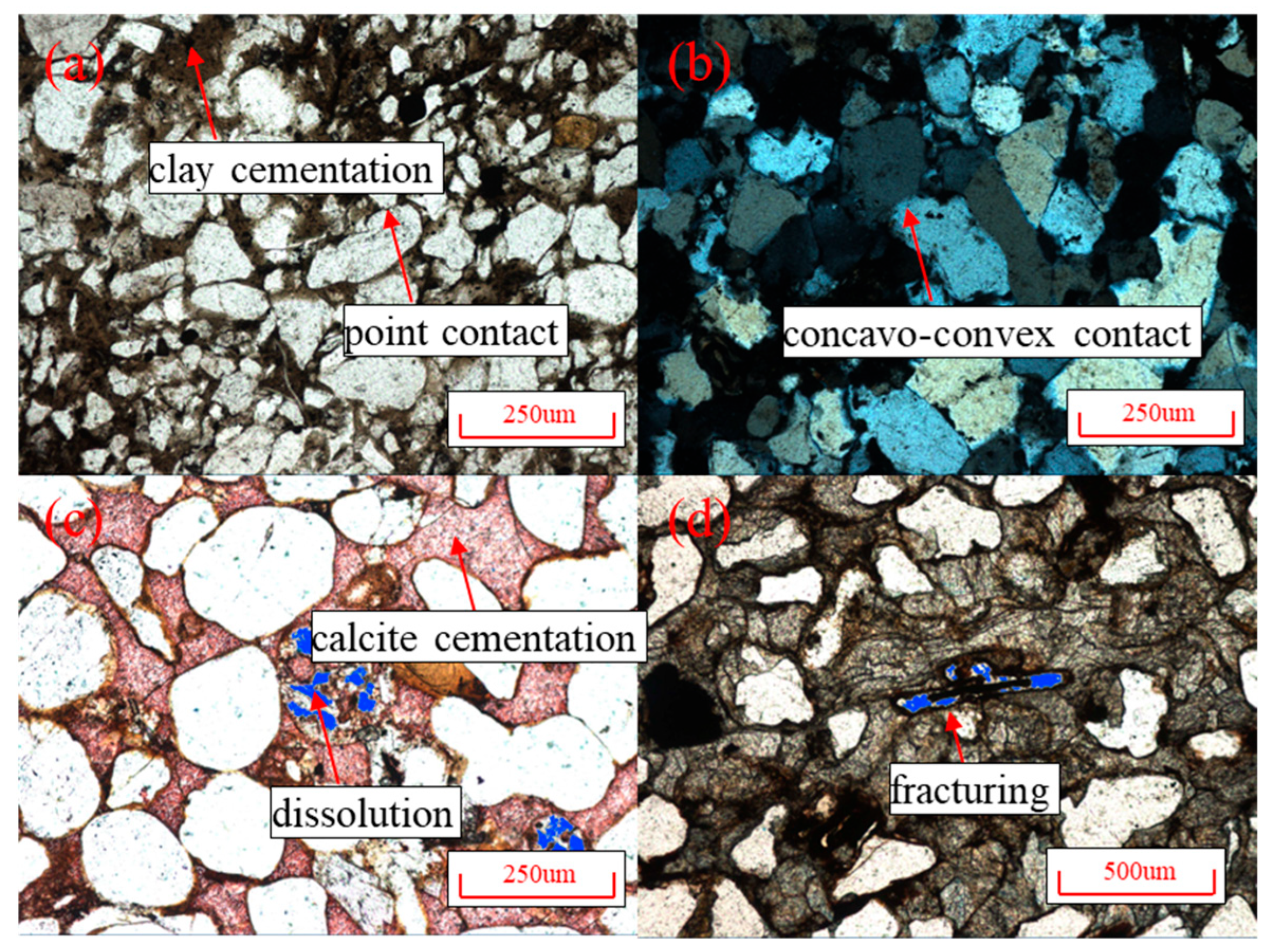
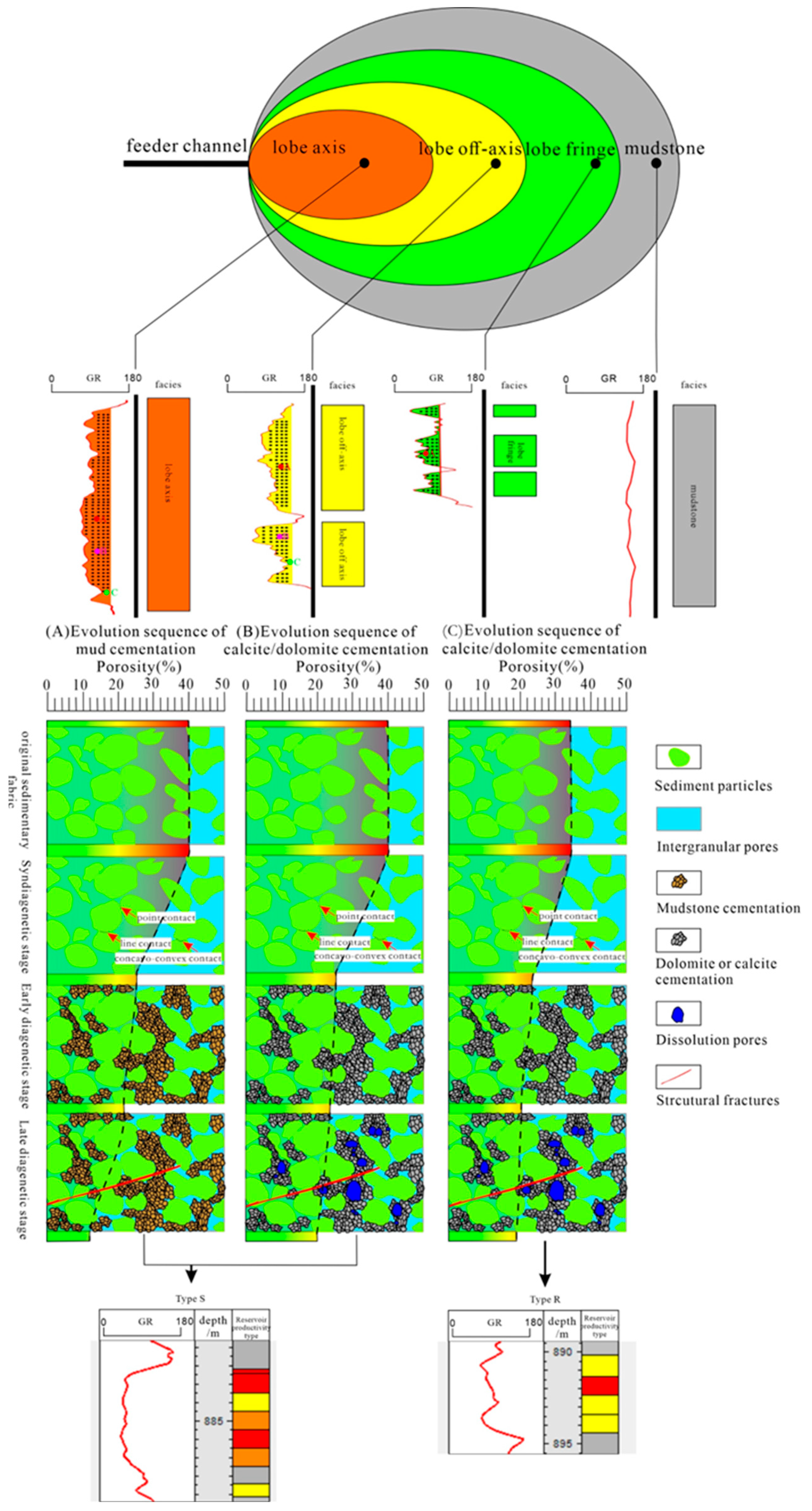
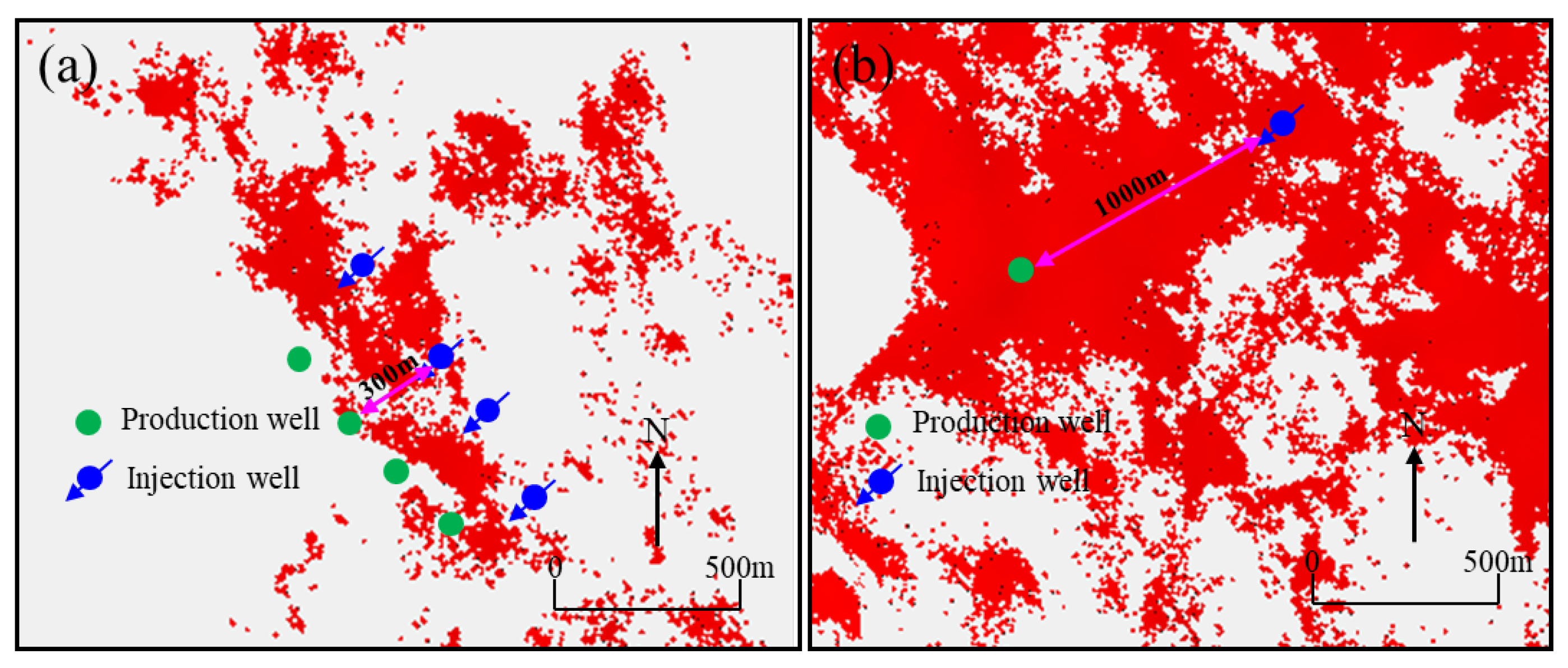
Disclaimer/Publisher’s Note: The statements, opinions and data contained in all publications are solely those of the individual author(s) and contributor(s) and not of MDPI and/or the editor(s). MDPI and/or the editor(s) disclaim responsibility for any injury to people or property resulting from any ideas, methods, instructions or products referred to in the content. |
© 2025 by the author. Licensee MDPI, Basel, Switzerland. This article is an open access article distributed under the terms and conditions of the Creative Commons Attribution (CC BY) license (https://creativecommons.org/licenses/by/4.0/).
Share and Cite
Li, C. Identification and Application of Preferred Seepage Channels in Turbidite Lobe Reservoirs of Formation A in Z Oilfield. Geosciences 2025, 15, 328. https://doi.org/10.3390/geosciences15090328
Li C. Identification and Application of Preferred Seepage Channels in Turbidite Lobe Reservoirs of Formation A in Z Oilfield. Geosciences. 2025; 15(9):328. https://doi.org/10.3390/geosciences15090328
Chicago/Turabian StyleLi, Changhai. 2025. "Identification and Application of Preferred Seepage Channels in Turbidite Lobe Reservoirs of Formation A in Z Oilfield" Geosciences 15, no. 9: 328. https://doi.org/10.3390/geosciences15090328
APA StyleLi, C. (2025). Identification and Application of Preferred Seepage Channels in Turbidite Lobe Reservoirs of Formation A in Z Oilfield. Geosciences, 15(9), 328. https://doi.org/10.3390/geosciences15090328





